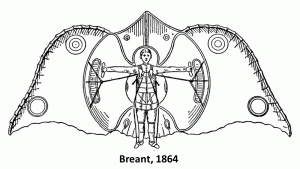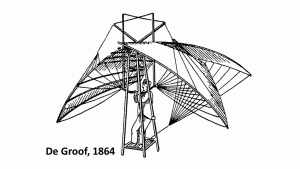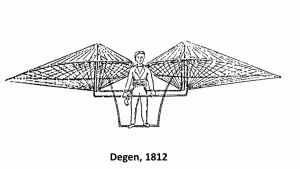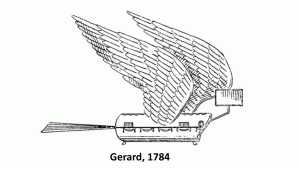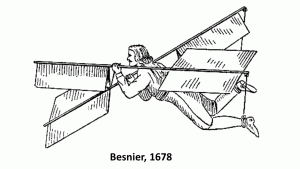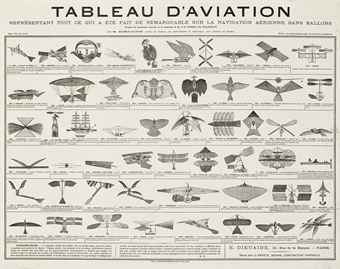The problem with flapping wings is that if they are large enough to sustain a full-grown person, they are generally too large to be flapped by a person’s muscles alone. I mean, have you seen a bird’s anatomy? They’ve got pec’s that put Chris Evans to shame (that’s the guy who played Captain America, in case you didn’t know). Plus, they’ve got TINY legs, while human legs constitute considerable dead weight, flight-wise.
In 1864, a gentleman named Breant designed the flapping contraption shown above. He cleverly added one-way valves in his wings, which let air flow through during the upstroke and thus reduced the air pressure in that direction. He also used elastic cords to provide a little extra pull in the appropriate direction.
How did that work out for him? Nobody really knows because he probably did not actually build and test the thing. However, it’s not hard to guess how things would have gone, and Octave Chanute did not hesitate to speculate, writing “it is not known whether it was ever tried, but it would have proved ineffective if it had been.” Good try, I guess.
LESSON: Even a super-soldier-serum-enhanced specimen of patriotism doesn’t have sufficient pectoral strength to flap wings like a bird. Maybe try fixed wings next time.
